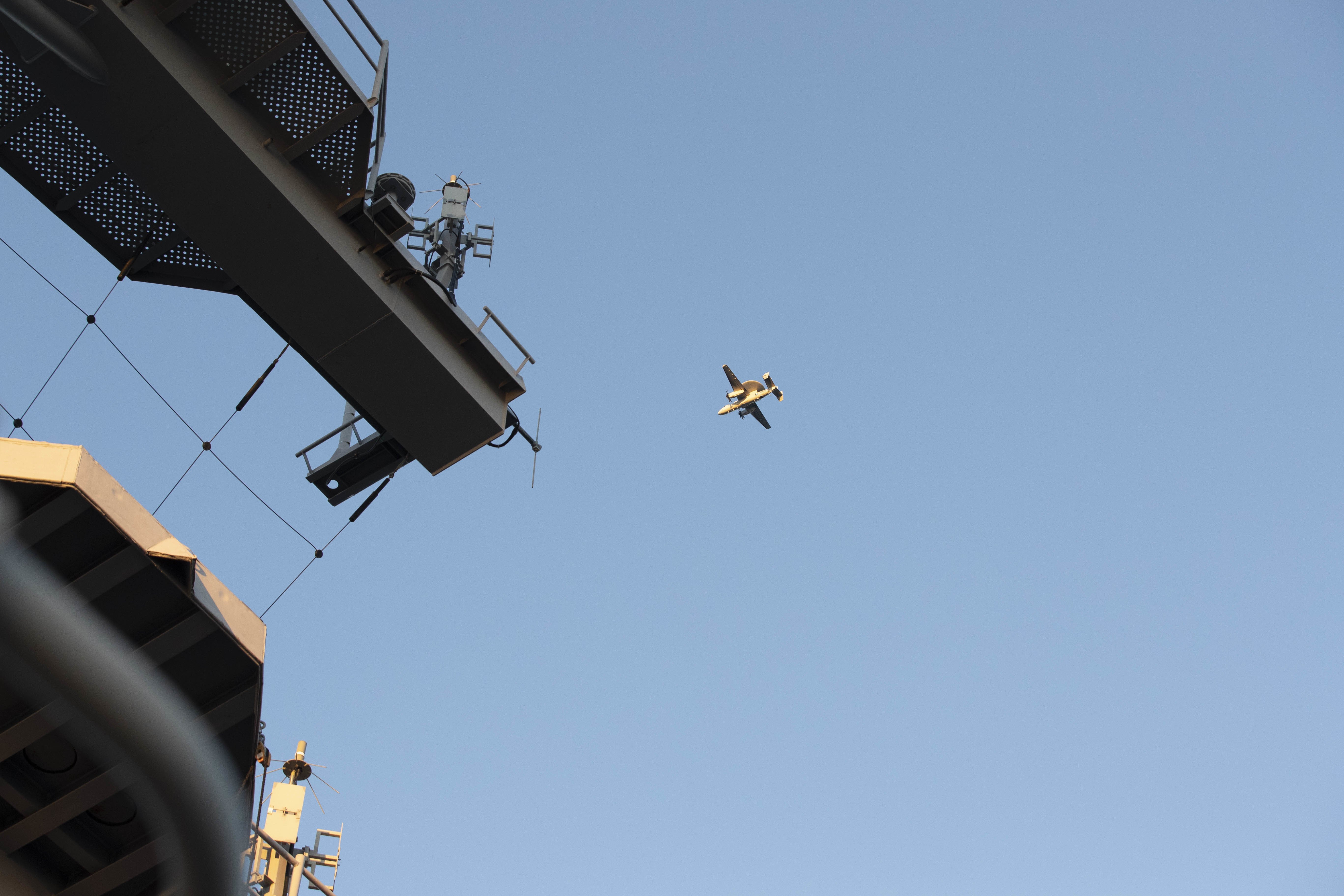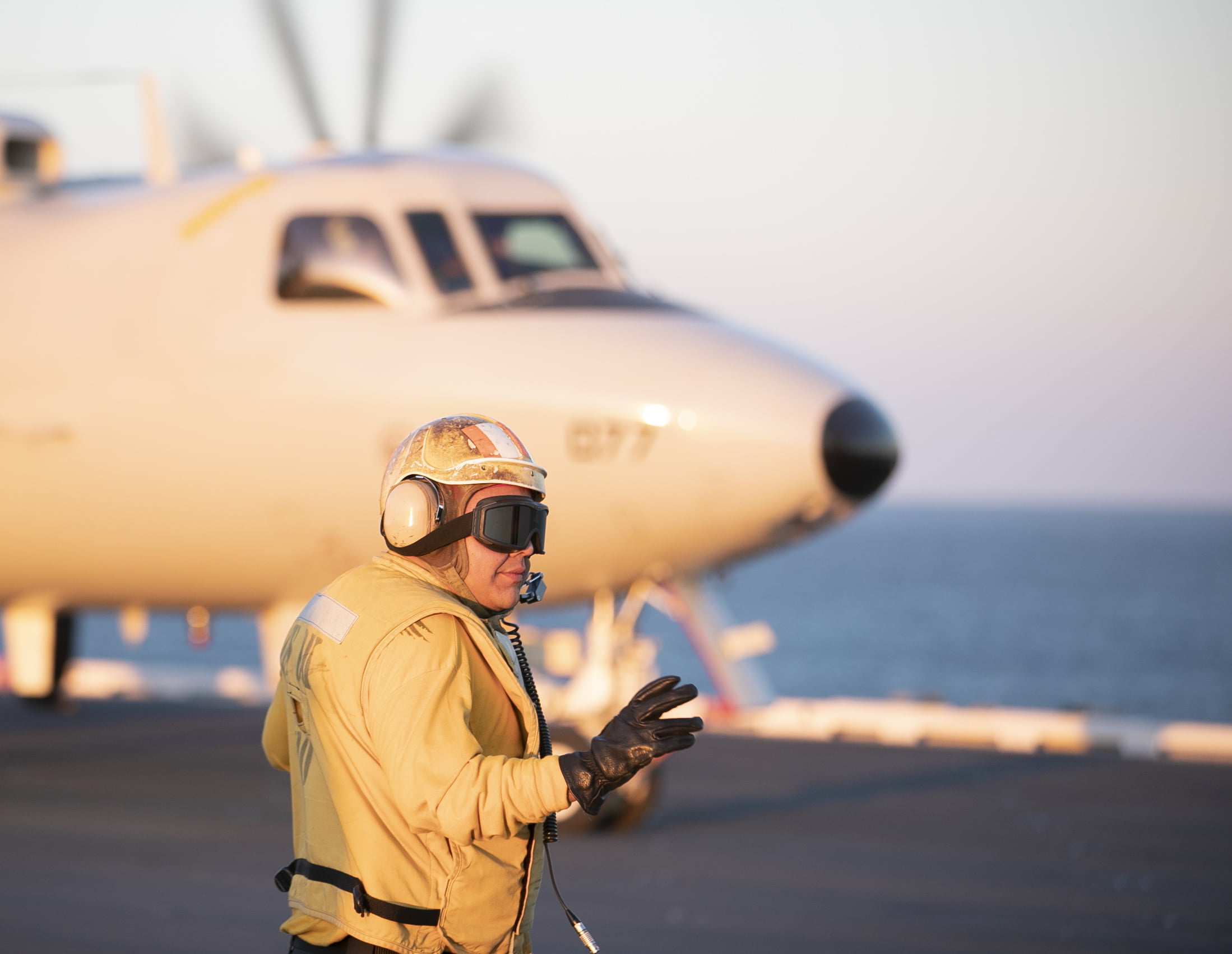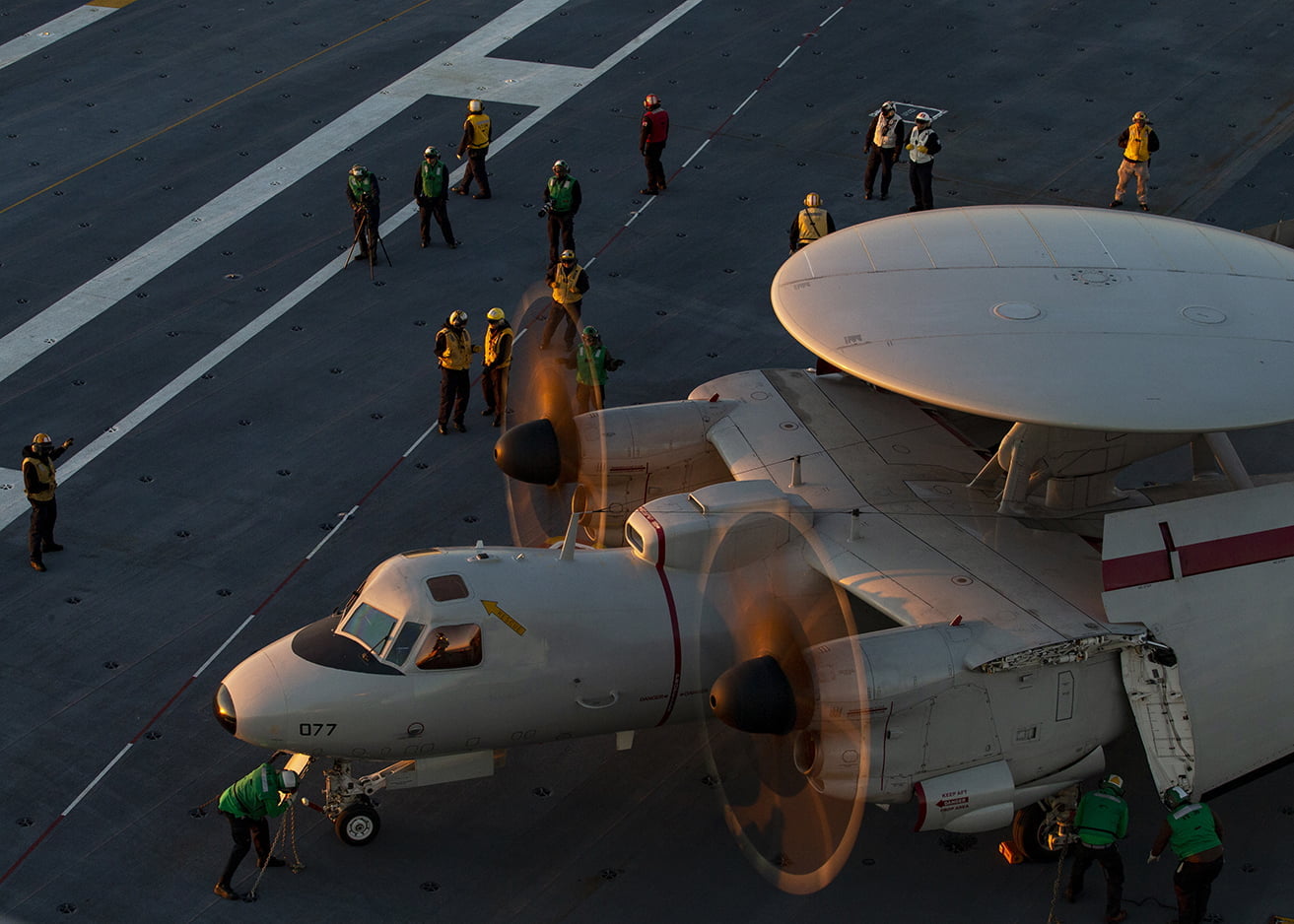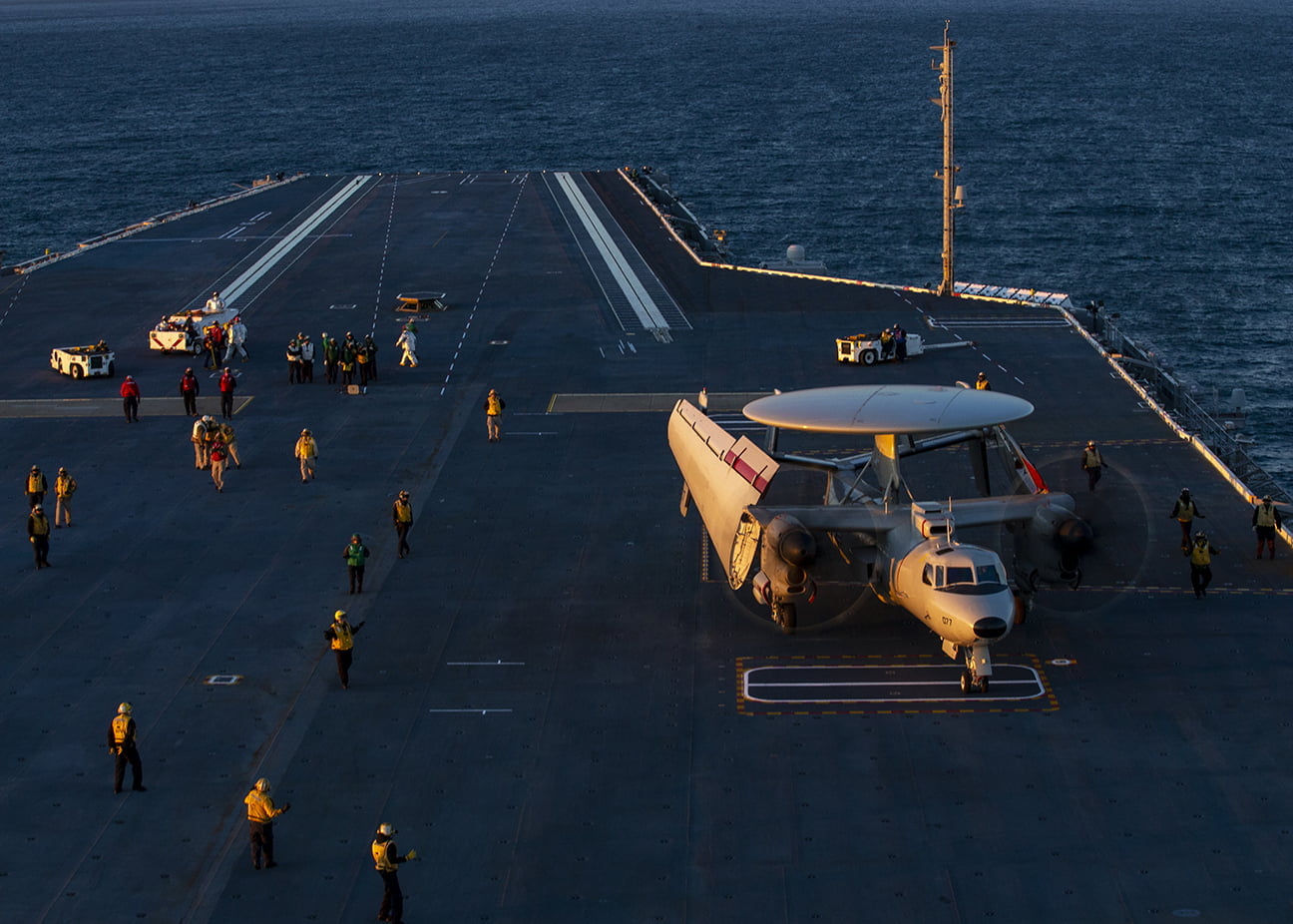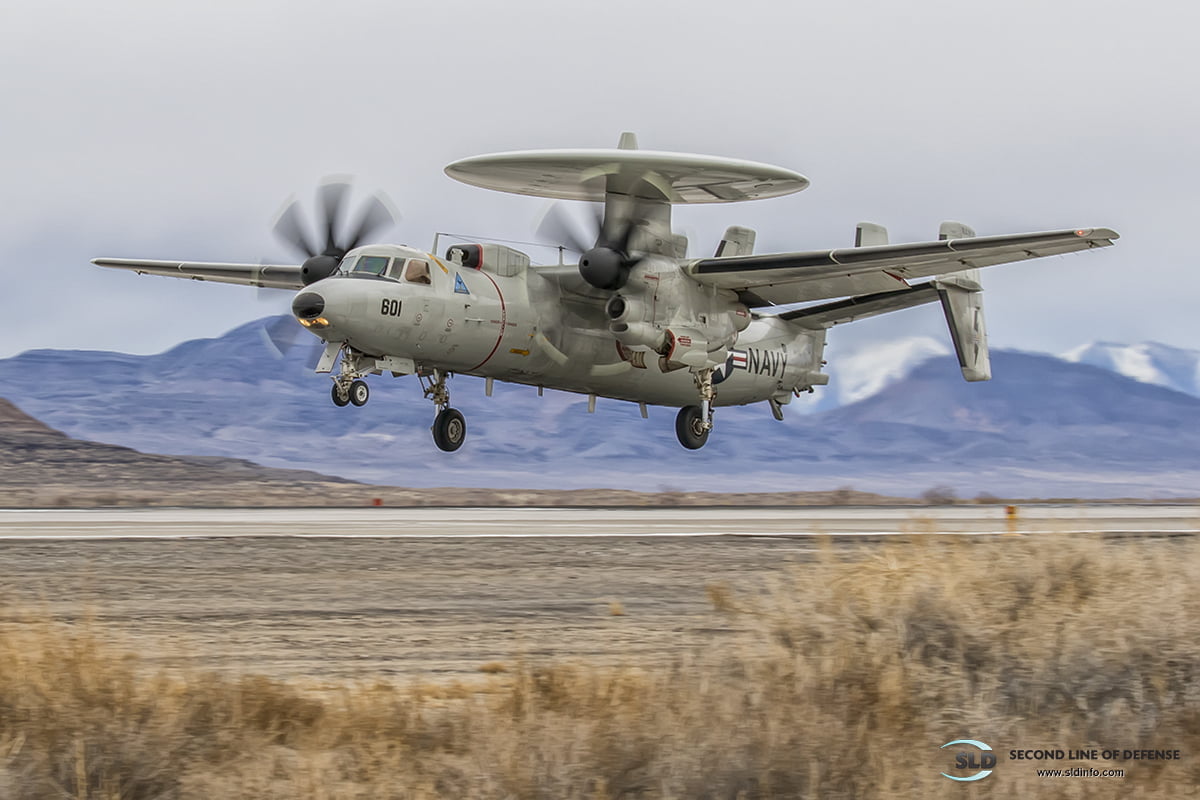By Robbin Laird
This week the Navy’s Airborne Command and Control Community celebrated the 60th anniversary of the first E-2 flight.
According to a story released by the public affairs team from Naval Air Force Atlantic:
“While the U.S. Navy celebrated its 245th birthday this October, the Airborne Command & Control Logistics Community marked a longevity milestone: the 60th anniversary of the maiden E-2 flight, Oct. 21, 2020.
“On Oct. 21, 1960, the first flight of the E-2A occurred out of Bethpage, New York. Five years later, on Oct. 19, 1965, the U.S. Navy conducted its first E-2 deployment.
“For 60 years, the E-2 has been the eye in the sky for the U.S. Navy,” said Capt. Michael France, Commander, Airborne Command & Control Logistics Wing, who has flown more than 4,700 hours flying 25 different aircraft. “The E-2 has continued to manage the airspace in both times of peace and in times of conflict, and we are grateful for every pilot, maintainer, and aircrew who have supported this community.”
The Commander of the Naval Air Force Atlantic, Rear Admiral Meier, discussed the history of the introduction of the Hawkeye into the carrier air wing with the current Commander of the Airborne Command and Control Logistics Wing, Captain Michael France.
In that podcast, Captain France started by going back to the test pilot who flew that first flight.
“21 October 1960 was the first flight of the E2 back then. It was known as the W2F or the Willy FID. And that first flight was formed by a guy named Tom Attridge and that name may sound familiar to some that’s the same gentleman who flew the F-11 and as a test program. And he’s the guy that shot himself down by going supersonic and flying faster than his bullets. And he ended up ditching in the field because of that. So that’s the same gentleman that flew the first flight of the E2 back in 21 October 1960.”
The discussion then turned to the way ahead for the airborne C2 community with regard to the various transitions which they are undergoing,
As Rear Admiral Meier put it:
“I think it is a fascinating time for the E2 community, for the whole community with the advent of the E2D is absolutely a game changer. And I’m wondering if you can talk about the role that the E2 takes on and the role that is evolving to include as we’ve discussed previously, your community’s busy with a lot of transitions and a whole lot of improvements which as a test pilot yourself has got to be just fascinating to be involved at as the Commodore.”
Captain France responded:
“We’re involved intimately in three significant transitions right now. We are to E2C to E2D currently about 50%, a little over 50% of transitioning squadrons from the C to the D as well as moving from E2D to E2DAR or area or fueling. That is why we built the E2D was to get Airborne and stay on station.
“And now we’ve transitioned our first squadron VW1-26 in Norfolk, Virginia, to the AR version. The mission systems in the back where the third transition we’re going through right now, going from disc two to disc three. So if you think about the E2D as it stands today, from where we were an E2D with air refueling and the disc three Modd is really why we built this aircraft.
“If you think long range detection and you think persistence on station with air refueling, this aircraft has been around for 60 years and some of the guys in the program say it’s going to be around until 2050. So think about possibly 90 years of flying this airplane. But that’s why we built this airplane. And it has proven itself from in major combat operations from the Vietnam war to Libya, the Gulf war. And it’s going to be around for the foreseeable future.
“When you talk about air refueling and being on station, we’re really moving in the direction of having a tracker that can track it range, but we can do things in the Multi-Domain fashion. We can bring multiple sensors into the aircraft and we can distribute information to the people that need it making so that they can make real time decisions about what they’re seeing.
“Also, we know we’re not just improving the mission systems, but as a test pilot, I’m heavily involved in championing programs, like a PLM type of system that we can put in our airplane that will help our pilots who have been out there doing that mission for eight, nine, 10 hours.
“After doing that air refueling task as well, coming back to the ship at night, bad weather pitching deck and getting some augmentation in the airplane, that’ll help them bring this aboard, bring this aircraft to aboard safely.”
The conversation then moved into the key area which we refer to as shaping kill web information distribution and C2 in the distributed battlespace.
Rear Admiral Meir underscored that “where I see the future of warfare going is the fusion of sensors and imagine unmanned aerial vehicle operating a couple hundred miles from a surface unit passively detecting the system, relaying that information then to that surface unit, which then plugs that into this network and shares amongst perhaps Marine shore-based, shore batteries, other surface ships, aviation units, fleet headquarters, all of those such that the best decisions with that information can be made.
“And those decisions may be to monitor that target. It may be to gather more information, or it may be to hold that target at risk. And that is absolutely where E2D plays such a vital role.”
A key issue in all of this is how naval integration intersects with joint or coalition force integration, which is a key work in progress, but clearly a force multiplier and enabler
This is how Rear Admiral Meier highlighted this challenge:
“You mentioned JADC-2 earlier, and that’s an interesting topic because that’s an air force led initiative joint, all domain command and control and everything that we’re doing in the Navy is intended and designed such that it will be both independent, which is the great strength of our carrier strike groups, our maneuver warfare, or lethality at range.
“We talked about the endurance of whether it’s E2 or others as a result of our refueling, but it is that maneuver lethality is a combination if you will, of the aircraft but also that independence of the aircraft carrier and then plugging completely in the JADC2 such that everything that the carrier is absorbing, learning and vacuuming up can then be plugged into the whole command and control network.”
In my visit to NAWDC earlier this year, I focused very much on the C2/ISR dynamics of change and how the airwing of the future was really best described as the integratable air wing. My interview with CDR Christopher Hulitt, then head of CAEWWS, the Navy’s airborne command & control weapons school located at Naval Aviation Warfighting Development Center (NAWDC) at Naval Air Station Fallon, provided a wide-ranging perspective on the way ahead for his community.
This discussion provides a useful compliment to the discussion between Rear Admiral Meier and Captain Michael France.
One of the key points which emerged in the discussion with CDR Hulitt was the following:
“With the coming of the F-35 to the carrier wing, there is a broader shift in working diverse sensor networks to deliver the combat effect which extended reach sensor networks can empower. At Fallon, they are working the relationship between the F-35 and the E-2D and sorting through how to make optimal use of both air systems in the extended battlespace. Commander, Airborne Command & Control and Logistics Wing and Carrier Air Wing Two and are moving forward with a new initiative, the First Integrated Training Evolution (FITE), which will provide basic, tailored integrated training incorporating E-2D(AR) and F-35 paired with fourth generation platforms.
“It is about deploying an extended trusted sensor network, which can be tapped through various wave forms, and then being able to shape how the decision-making arc can best deliver the desired combat effect.”
The podcast of Rear Admiral Meir and Captain France can be listened to below:
Featured Photo: An E-2C Hawkeye assigned to the “Bear Aces” of Carrier Airborne Early Warning Squadron 124 lands aboard the aircraft carrier USS Theodore Roosevelt. Theodore Roosevelt and Carrier Air Wing 8 are operating in the U.S. 5th Fleet area of responsibility.



